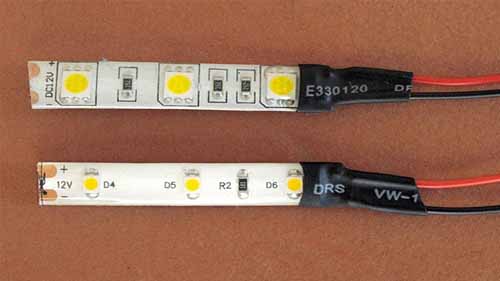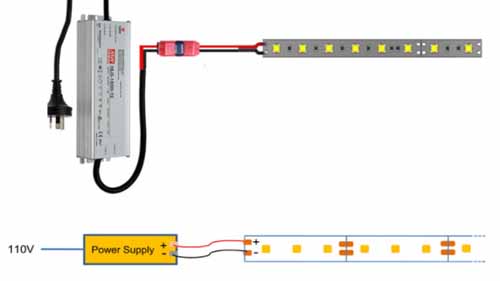
How to Power Led Strips: A Complete Guide

When working on an led strip project, one of the things you’ll need to figure out is how you’ll provide power. Power is the determinant of whether the lights will work at their best or keep on flickering and malfunction in the process.
To do this, you need to understand the different aspects that contribute to led power. You’ll need to figure out your power supply options and how to make the connections using the required led accessories.
Typically, led strips feature either 12 V or 24 V. With this in mind, you’ll be in a better position when figuring out your powering options.
Table of Contents
Power Supply

Power supplies compatible with LED strip lights are designed to be unique and fulfill a purpose that is not found in others. An led power supply not only steps down power voltage but also converts currents from your mains AC to DC.
These features give this accessory a variety of different names. Some will call it a transformer or an led driver. All these names refer to using an led power supply to get your desired outcome after installation.
Choosing your power supply is what you should be more focused on. There are two things that you should always take into consideration. They include:
Led Strip Voltage

Your led voltage will play a big role in determining which power supply will suit you best. When purchasing your led strip, you’ll find that in the product description, you have the voltage stated.
If that is not the case, then take a look at the product photo and you’ll find it there. The voltage will generally range between 12 volts and 24 volts. With these figures, you’ll now need to figure out whether your choice of power supply matches up.
If your led strips are at 12 volts, you should make sure that your power supply is also at 12 volts. It is also important to pay attention to the input voltage on the main AC to ensure that it matches up with your country’s voltage.
Power Wattage and Consumption

Determining the power wattage on your led strip will require you to check the product description during your purchase.
Once you have the figure, you can easily determine the amperage. This will help you figure out the power consumption of the led strips in both wattage and amperage. After that is done, you’ll now move to your power supply option to figure out if it is compatible.
For this, the power supply’s wattage and amperage are allowed to be a bit higher provided it sticks to the led strip’s voltage. It is made possible by the fact that the power supply can adjust and release the exact amount of power your led lights use.
This means that you won’t have to worry about overloading your led lights with too much power. On the other hand, using a power supply that is lower in production as compared to the consumption of your led strips is not right. This will exhaust the power supply resulting in poor lighting and faulty connections.
How to Connect Led Strips to Power

Connecting your led strips to power is relatively easy and changes depending on the power source you use. For instance, if you’re using a plug-in power supply where you’ll directly plug into your socket to power your led strip, it will feature a 2.1 mm male point connection.
When it comes to led strips, most of them will come with a female 2.1mm connection point ensuring that the connection is seamless. All you’ll need to do is plug in the led strips into your plug-in power supply and you’ll have a working led light.
The other option is for those using the hardwired power supplies. The connection here is a bit different and requires you to be a bit more hands-on. Here, you have two choices that will give you good results.
One, if your led strip comes with a female 2.1mm plug, consider investing in a 2.1mm male screw-in-plug that you can connect to your power supply and introduce your led strips.
Two, consider removing the plug on the led strip to work with bare wires that you can connect appropriately to your power supply using wire nuts.
If you’re considering the use of multiple led strips while using one source of power, you’ll need to invest in a led strip splitter.
For this, all you need to do is connect the led strips to the ends of your led splitter and then plug in your female connector to the male connector on your power supply. This will ensure that power is distributed evenly and the lights are working as they should.
Conclusion
Powering your led strips requires you to pay attention to the type of power supply you get and the kind of connections you want to make. Take your time to find what works best and make the connections accurately to ensure the lights work as they should.



